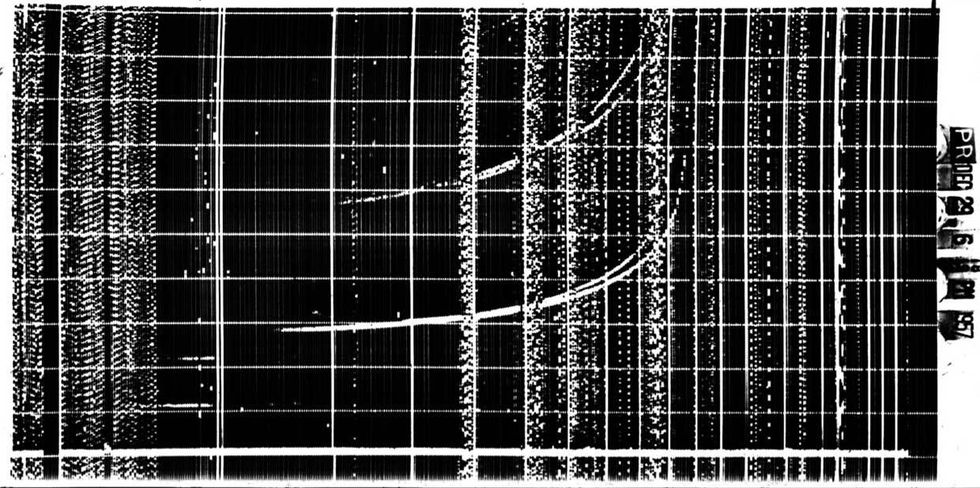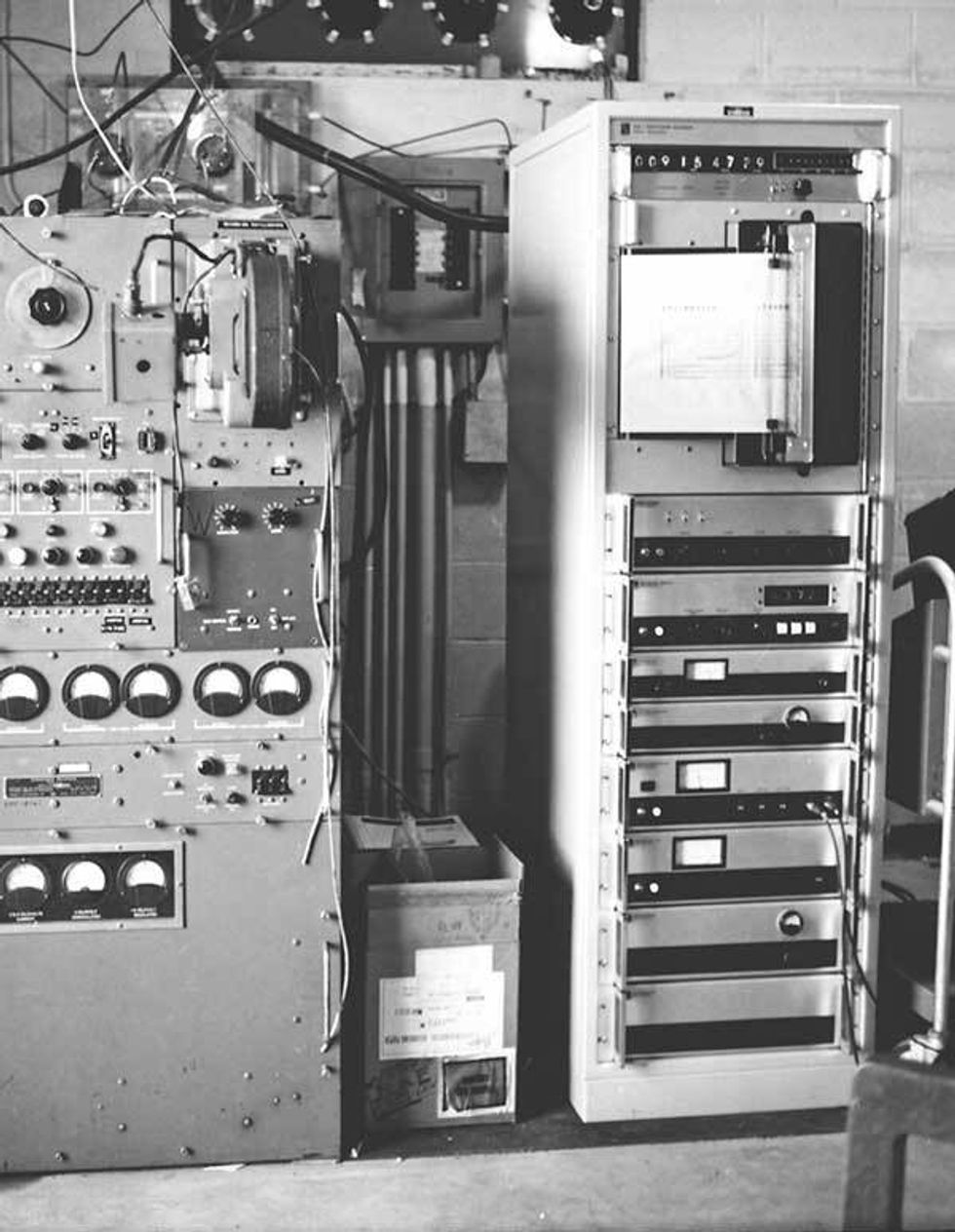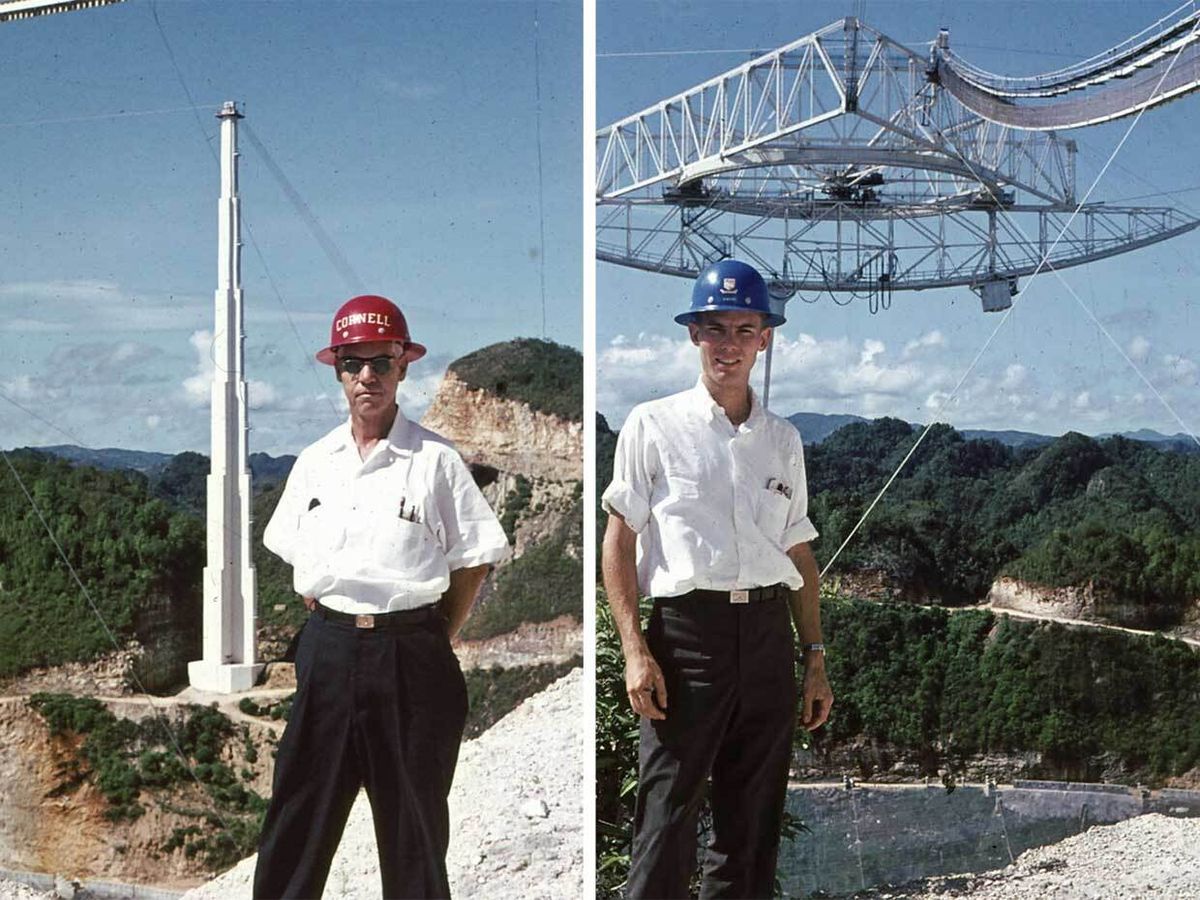THE INSTITUTE After nearly six decades of operation, the Arecibo Observatory's telescope in northwestern Puerto Rico—once the world's largest single-dish radio telescope—collapsed late last year.
Hundreds of engineers and researchers worked to build up the observatory's capabilities and keep it running, including Theodore R.Gilliland and his son, Clinton, who were Institute of Radio Engineers members. They became IEEE members when the IRE—founded in 1912 to deal with the up-and-coming field of radio—merged with the American Institute of Electrical Engineers in 1963 to form IEEE.
Clinton Gilliland, who is an IEEE life member, recently sat down with the IEEE History Center for a new oral history and described how he and his father ended up working at the observatory. Theodore, now deceased, built the observatory's first ionospheric sounder in the early 1960s. The ionosphere, the ionized part of Earth's upper atmosphere, reflects radio waves.
Sounding is a technique for measuring the ionosphere using transmitters and receivers operating in shortwave radio bands. Clinton Gilliland replaced his father's device at Arecibo in 1971 with a more advanced version that he helped design while working for BR Communications, in Harrisonburg, Va. The portable device had a built-in screen for displaying data. It could receive transmissions from all over the world, unlike previous versions.
The Arecibo Observatory was built in the early 1960s as part of a U.S.Defense Advanced Research Projects Agency missile-defense program. DARPA wanted to use radar to detect any incoming missiles while they traveled through the ionosphere. The observatory, which was run by Cornell University until 2011, also was used as a general-purpose radio telescope.
The site was honored with an IEEE Milestone in 2001.
“Facilities like Arecibo have opened up vast new research vistas and enabled us to pursue the most imaginative and creative ideas," IEEE Life Fellow Joseph Bordogna, then the deputy director of the U.S.National Science Foundation, said in a news release about the IEEE Milestone dedication.
IT RUNS IN THE FAMILY
Before Theodore Gilliland worked at the observatory, he was an engineer at the National Bureau of Standards, now the National Institute of Standards and Technology, in Washington, D.C. After he joined the NBS in 1927, he experimented with ionospheric sounder designs. He was a pioneer in the field, according to a report from the agency.
The NBS had started investigating the ionosphere in the early 1930s in collaboration with the U.S.Naval Research Laboratory. The NRL had two 20-kilowatt crystal-controlled transmitters in Washington, D.C. Signals would be sent from the transmitters in pulses, which bounced off the ionosphere before returning to the field station the NBS built in Kensington, Md. There the signals were detected by an oscillograph, which had eight5-centimeter cathode-ray tubes arranged side by side.
A removable camera with a fast shutter speed captured the cathode-ray tubes on 35-millimeter film.
To test the electron density in the atmosphere, the researchers would send a signal, then change the frequency and do the experiment again, according to the NBS report.
Theodore Gilliland, who recently had received a master's degree with a specialization in electronics from Harvard, developed the C-3—a better ionospheric sounder—for the NBS in 1932. The C-3 was “the first multifrequency sounder that swept over the whole shortwave band," Clinton Gilliland told The Institute. “And it was self-contained, so it transmitted and received at the same site."

The NBS wanted to expand its research and build a field station in Puerto Rico, this time using Theodore Gilliland's sounder. It asked him to find a suitable location for the new station; he selected Ramey Air Force Base on the northwest corner of the island, according to the oral history. The base had been used during World WarII to protect routes to the Panama Canal from the Axis powers.
The agency's equipment was installed in the base's existing buildings in 1949. The Gilliland family moved into housing provided to them, and Clinton and his sister received their education at the base's school, he says.
When the observatory began operations in 1963, Theodore Gilliland started sending the NBS data to the facility at the request of William E.Gordon, a professor of electrical engineering at Cornell and the observatory's first director. Gordon, who developed the telescope used at the facility, wanted to study the ionosphere and used the NBS data in his research.
In the mid-1960s, the NBS decided to shut down the field station. Cornell asked to keep the station's C-3 sounder, but the NBS declined his request. Instead, the agency loaned the equipment to the observatory for a year.
Theodore Gilliland was planning to retire from the NBS after the field station closed, but Gordon asked him to build the observatory its own sounder. He agreed and constructed one out of spare parts, his son told The Institute.
“He built one very similar to his original invention, but rather than use the photographic camera," Clinton Gilliland says, “he built a system that recorded the images on Teledeltos paper." The electrically conductive paper is coated with carbon on one side.
After growing up around the observatory, Clinton Gilliland decided to pursue a career in science. He earned a bachelor's degree in physics from Georgia Tech in 1959 and joined the Stanford Radiological Sciences Laboratory. There he operated field sites for high-frequency radio-receiving equipment located in Italy, Malta, and the United States.

In 1968 he joined BR Communications and helped design a vertical chirp ionosphere sounder. The portable model could receive transmissions from around the world, according to a 1994 paper written on the device inAnnals of Geophysics.
BR Communications sold the sounder to the U.S. Air Force and Navy. They used it to gather ionospheric data and find a reliable high-frequency channel to use during missions, according to a 2010 conference paper on the technology.
Clinton Gilliland says he joined the Air Force on an exercise in Turkey while the military was testing the sounder.
BR Communications sold the sounder in 1971 to Cornell for the Arecibo Observatory—coming full circle.
“I ended up taking it to Arecibo and replaced my father's sounder," Clinton Gilliland says. The trip was especially memorable for him, as he and his wife, Mary, were on their honeymoon.
That was the last time Clinton Gilliland visited the facility.
In August, one of the 8-cm-thick steel cables suspending “a nearly 82,000-kilogram instrument platform high above the dish reflector" fell out of its socket at one end and sliced into the dish, according to an article about the observatory in Science. Three months later, another cable snapped, and the instrument platform collapsed. The NSF, which owned the facility since 1969, deemed it too dangerous to repair.
Scientists and engineers say they hope the observatory still can be used for radio telescope work and STEM education, however, according to a Daily Mail article.
Clinton Gilliland and his wife are members of the IEEE Heritage Circle. The donor recognition program of the IEEE Foundation acknowledges members who have pledged more than US $10,000 to support various IEEE programs and awards.
IEEE membership offers a wide range of benefits and opportunities for those who share a common interest in technology. If you are not already a member, consider joining IEEE and becoming part of a worldwide network of more than 400,000 students and professionals.
Joanna Goodrich is the associate editor of The Institute, covering the work and accomplishments of IEEE members and IEEE and technology-related events. She has a master's degree in health communications from Rutgers University, in New Brunswick, N.J.



